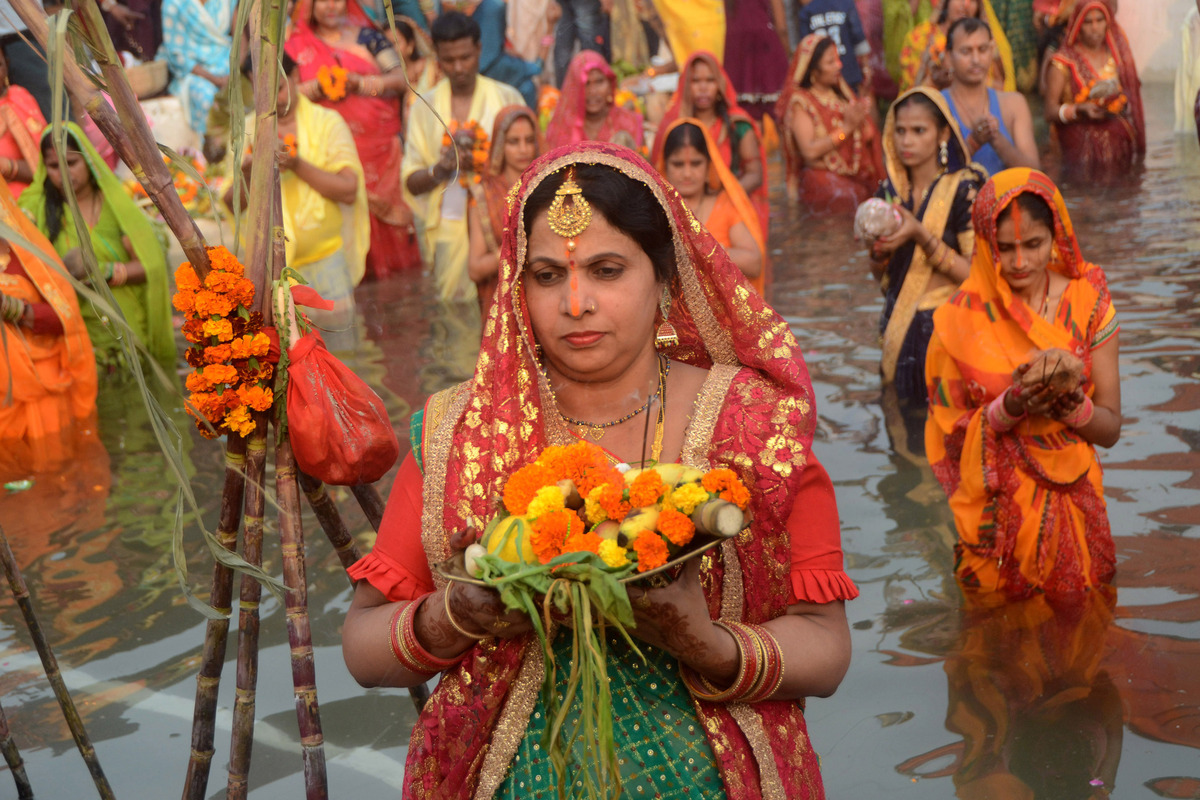Devotees across Delhi and the National Capital Region went back home on Friday morning as they concluded the Chhath Puja with prayers to the Sun as the smoggy day broke.
Just as the third day of Chhath Puja saw hundreds throng ghats in the national capital to perform the evening Puja, offering prayers to the setting sun, similar was the sight on Friday morning, the fourth day of the festival that marked its conclusion.
Advertisement
Many hold this ritual as the most significant day of the elaborate festival, which is dedicated to worshipping the Sun God for health, prosperity and the fulfilment of wishes.
The Chhath Puja is primarily celebrated by the Purvanchali community and bears immense cultural and religious significance.
Speaking to IANS, Vidya, a resident of Delhi and a native of Bihar, explained the occasion and its roots in mythology: “Chhath Puja holds great importance. Initially, it was performed by Sita Ji, and later, we have been observing it. Sita Ji performed it for her kingdom, and we also pray to Chathi Mai for certain wishes. Once our wishes are fulfilled, we perform the rituals.”
Prayers are offered to the Sun God and His sister Chathi Mai.
Given the rising number of Chhath devotees, the Delhi Government set up around 1,000 artificial ghats across the Capital, so as to facilitate the smooth celebration of the festival. These artificial ghats serve as substitutes for the traditional riverbanks.
Although the celebrations in Delhi were marked by political stir as much as devotion was in the air, there were reportedly inadequate preparations for the festivities and the toxic condition of the Yamuna river added to the woes of all alike.
Also, in order to mitigate the risk of vector-borne diseases during the festival, the Municipal Corporation of Delhi (MCD) carried out extensive fogging operations at over 1,000 Chhath ghats across the city. The MCD also implemented anti-larval measures to prevent the breeding of mosquitoes.
The four-day festival represents more than just a religious observance—it’s a time for familial bonding and a call for the well-being of their loved ones.
Beyond its religious and cultural significance, Chhath Puja also carries an ecological message. The festival’s connection to water resources is profound, as devotees gather near rivers, ponds, or other water bodies to offer prayers and perform rituals.











